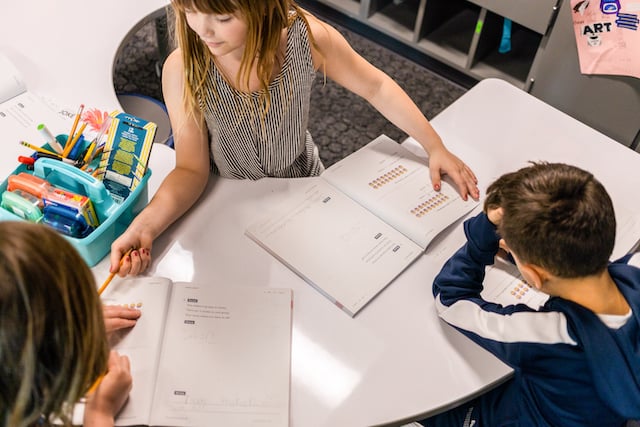Posted in: Aha! Blog > Eureka Math Blog > > Believe in Your Students (and Believe in Yourself Too)
I’ll never forget the first time I used the area model to solve complex multiplication problems with my Grade 5 students. It looked so different from the way I learned to multiply. I wondered whether my students would understand how the area model could help with multiplication. But they did! They were so excited to make connections to a familiar model they had used in a different context, and I was blown away by the depth of their place-value understanding. My students and I both learned something that day. That’s why I believe in them, I believe in myself, and I believe in Eureka Math®.
Make sure your students know you believe in them.
So many students tell me either in action or in words that they don’t see themselves as “math people.” But I believe all my students can do great things in math, and I tell them that every single day.
When I was growing up, my math education was somewhat different from the average student’s. My family moved around, and I attended many different schools, which exposed me to many different approaches to doing math. Often, the math teacher showed a set of steps that I had to memorize to solve math problems the right way and get the right answer. Fortunately, I was able to either re-create the steps or draw from my prior experiences in other math classrooms, so I was usually successful in math. But I watched so many of my classmates struggle, especially those who hadn’t benefited as I had from seeing different approaches to math. My classmates didn’t always understand the “why” behind the math, so they wound up feeling defeated. Now that I’m a math teacher, I never want my students to experience that feeling.
When I compare how my students learn with Eureka Math to how I learned math, I see the difference. They don’t just do math. They understand it. We work on fluency, we use models, we take time for concept development, and we debrief our lessons. I know that each one of my students is capable of greatness, and I see that greatness shining through when my students understand the math. I’m their biggest cheerleader. I tell them, “You’re not going to walk out of here thinking you can’t do this. You can.”
Get your students’ families to believe too.
So often, parents and family members tell me, “I’m not a math person, so I get why my student struggles with math.” I often feel compelled to convince those family members that their student can overcome any struggles with math. Sometimes the path to helping family members believe is difficult, but the result is worth it. When students feel that support from their family, it can change their whole outlook on math.
Families come to understand that I can help their student find a strategy that works for them. I work directly with families and show them the strategies their students use in class. I explain that while the math strategies may look different from the ones they know, I’m helping students find that “just right” approach they need to unlock the math. These conversations help family members see that their students are prepared and are capable of handling complex math problems that many of us may have found daunting as students ourselves.
I want to end the false narrative that math is about doing things the right way to get the right answer. Students may come to my class thinking they can’t do math, and their parents may feel the same way. But I make sure students leave my class at the end of the year knowing that they can be successful in math and that they can do great things. Helping students’ families believe in that outcome and engaging them in the process is essential to helping students believe in themselves.
There is not one right way to do math.
My Grade 5 students quickly learn that there are many different strategies to use in math class. At first, my students might ask how I want them to solve a problem. I typically answer with, “Which method works best for you?”
Students are often surprised not only that there are different approaches to the math but that they get to decide which approach to use. Learning to choose wisely helps students understand the “why” behind the math. Sometimes I jump-start their thinking by asking which math strategies they’ve used before that might work. Or I might ask how they can draw the problem to make sense of it. But the students have ownership of their work.
Because I value students’ choices in applying different strategies, I make sure students see different solution strategies. I also make sure they know I value the different ways they think about math. Sometimes a student tries a strategy for solving a problem and then uses a different strategy or model to check their work. Or perhaps they see a strategy a classmate used successfully. Then, suddenly, a lightbulb goes on, and the math makes so much more sense to them.
When students encounter a new concept and can make a connection with something they already know to solve the problem independently, their eyes just light up. I live for those aha moments. Using different strategies and talking about them can help students make connections and deepen their understanding, which in turn creates those moments. And that empowers students to believe in themselves the way that I believe in them.
I’ve had many students tell me at the beginning of the year that math isn’t their strength. I tell them, “Just wait. You will be amazed by what you can do.” Teaching Eureka Math has helped me believe that every child is a math person and that every child truly is capable of greatness.
Submit the Form to Print

Ellen Floyd
Ellen is a 5th grade teacher in her 9th year of teaching. She specializes in and teaches Math & Science this school year.
Topics: Featured










